The enigmatic and mesmerizing presence of serpents in mythology has captivated mankind for centuries. These mystical creatures have been revered and feared, symbolizing various concepts such as creation, rebirth, and spiritual transformation. In this article, we delve into the significance of serpents in mythology and explore the fascinating connection they have with the constellation known as Ophiuchus. Journey with us through ancient cultures and their interpretations of serpents, uncover the traits of Ophiuchus individuals, and unravel the serpent’s influence in astrology and spiritual transformation. Prepare to be immersed in a world where serpents slither through the depths of human imagination, leaving a profound impact on our beliefs and understanding of the universe.
Contents
- The Serpent in Ancient Mythology
- The Serpent in Different Cultures
- The Connection to Ophiuchus
- Serpent Symbolism in Astrology
- The Serpent and Transformation
- Conclusion
- Frequently Asked Questions
- References
-
Frequently Asked Questions
- FAQ 1: Why are serpents significant in mythology?
- FAQ 2: What does the serpent represent in creation myths?
- FAQ 3: Why are serpents considered symbols of rebirth and renewal?
- FAQ 4: What role do snake gods play in Egyptian mythology?
- FAQ 5: Who are the Nāga in Hindu mythology?
- FAQ 6: What is the significance of Aztec serpent deities and Quetzalcoatl?
- FAQ 7: Who is Ophiuchus, the serpent bearer?
- FAQ 8: What are the traits of Ophiuchus individuals?
- FAQ 9: Why is the serpent a powerful archetype in astrology?
- FAQ 10: How is Ophiuchus interpreted in the zodiac?
- References
- Read More
The Serpent in Ancient Mythology
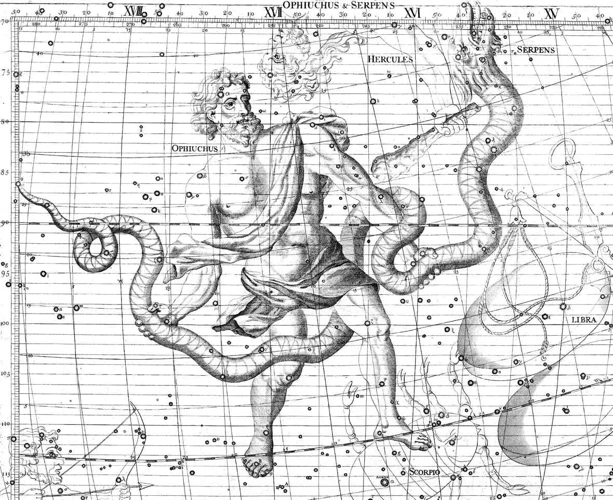
Throughout ancient mythology, serpents held a significant place, symbolizing various concepts and playing pivotal roles in creation myths and stories of rebirth and renewal. Let us delve into the mystical world of serpents and their profound meaning in ancient cultures.
In numerous creation myths, serpents play a central role in the birth or formation of the world. For instance, in Egyptian mythology, the Ouroboros, a serpent devouring its own tail, represented the cyclical nature of creation and destruction. This symbol was often associated with the god Atum, who was believed to have created the world out of chaos.
Across different cultures, serpents were seen as symbols of rebirth and renewal due to their ability to shed their skin and emerge transformed. In Greek mythology, the serpent-like creature known as the Hydra possessed regenerative abilities, growing two heads for each one that was cut off. In this way, the serpent became a powerful symbol of resilience and the continuous cycle of life.
The ancient mythologies were rich with tales featuring serpents as prominent characters, embodying both positive and negative aspects. The serpent’s association with creation and rebirth highlights its enduring significance in ancient cultures and sets the stage for further exploration into the connection between serpents and the enigmatic constellation of Ophiuchus, a topic we will delve into later in this article.
[Link: /exploring-symbolism-ophiuchus-mythology/]
Serpents in Creation Myths
Serpents hold a prominent place in creation myths across various ancient cultures, symbolizing the fundamental forces that shaped the world. In many mythologies, serpents are depicted as powerful entities associated with creation and the origins of the universe.
In Norse mythology, the primeval serpent Jörmungandr played a crucial role in the creation of the world. It was believed that Jörmungandr encircled the entire realm, biting its own tail and forming a great cosmic circle. This depiction symbolized the constant cycle of creation and destruction, emphasizing the serpent’s connection to the eternal nature of existence.
Similarly, in the Aztec creation myth, the god Quetzalcoatl, often depicted as a feathered serpent, played a pivotal role. Quetzalcoatl was believed to have descended into the underworld and retrieved the remains of previous creations, giving birth to the current world. The intertwining of the serpent and the god represented the fusion of life and wisdom, as well as the cyclical nature of creation.
These examples highlight the universal recognition of serpents as powerful beings in the act of shaping the world. Serpents in creation myths serve as reminders of the interconnectedness of all things and the ever-present cycle of life, death, and rebirth.
[Link: /ophiuchus-health-astrological-perspective/]
Serpents as Symbols of Rebirth and Renewal
Serpents have long been revered as symbols of rebirth and renewal in various mythologies and cultures. Their ability to shed their skin and emerge transformed has made them powerful metaphors for the cycle of life and growth. Let us explore some of these fascinating examples:
1. The Ouroboros: In ancient Egyptian and Greek mythology, the Ouroboros, a serpent or dragon devouring its own tail, symbolized the eternal cycle of life, death, and rebirth. This symbol emphasized the interconnectedness and continuity of existence.
2. The Hydra of Lerna: In Greek mythology, the Hydra was a fearsome serpent-like creature with multiple heads. When one of its heads was severed, two would grow back in its place. This regenerative ability demonstrated the serpent’s power to rejuvenate and renew itself, representing the ever-renewing forces of nature.
3. Chinese Dragons: In Chinese tradition, dragons were often depicted as serpents with the power to control the elements. They were associated with fertility, rainfall, and agricultural abundance. Dragons were seen as benevolent creatures symbolizing renewal and prosperity.
4. Kundalini Energy: In Hinduism, the concept of Kundalini represents the dormant spiritual energy coiled at the base of the spine, often depicted as a serpent. When awakened through practices such as meditation and yoga, this energy rises, leading to spiritual enlightenment and rebirth of consciousness.
These examples illustrate the serpent’s profound symbolism as a catalyst for transformation and renewal in various mythologies and belief systems. The association of serpents with rebirth and renewal continues to captivate our imagination and invites us to reflect on the cycles of life and our capacity for personal growth and transformation.
[Link: /beyond-horoscope-ophiuchus-zodiac/]
The Serpent in Different Cultures
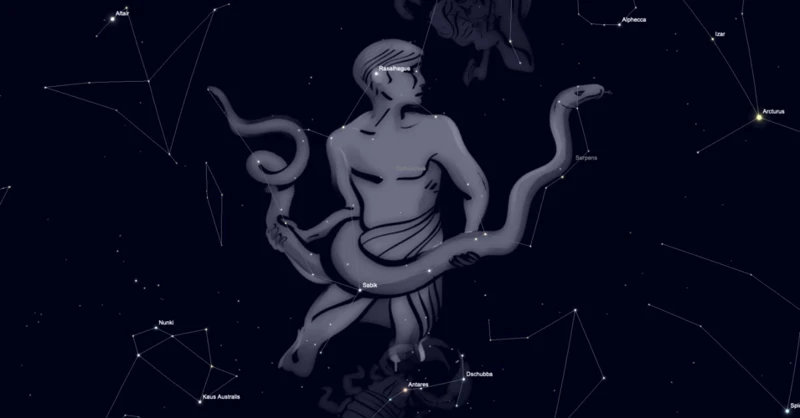
The serpent’s significance extends beyond a single culture, as it appears in various ancient mythologies around the world. Let us explore some of these cultures and their unique interpretations of serpents.
– Snake Gods in Egyptian Mythology: In Egyptian mythology, serpents held a prominent role as deities. Wadjet, the cobra goddess, symbolized protection and was often depicted as a serpent or as a woman with the head of a serpent. Another snake deity, Apep, represented chaos and destruction. Egyptians also associated serpents with the pharaoh’s power and utilized their imagery in crowns and headdresses.
– Nāga, the Serpent Deities of Hindu Mythology: Hindu mythology features Nāga, a race of powerful serpent deities. Nāgas are often depicted as half-human, half-serpent beings and are associated with water, fertility, and protection. They are renowned for their ability to bestow wisdom and wealth upon humans. The serpent god Shesha, who supports the universe on his serpentine coils, is another prominent figure in Hindu mythology.
– Aztec Serpent Deities and Quetzalcoatl: The Aztec civilization held serpents in high regard as well. The Feathered Serpent deity, Quetzalcoatl, was worshipped as a bringer of knowledge, culture, and enlightenment. Depicted as a feathered serpent, Quetzalcoatl was associated with creation, fertility, and the planet Venus. The Aztecs believed that Quetzalcoatl would return one day to restore order and harmony.
The diverse interpretations of serpents in different cultures illustrate their universal symbolism and their ability to transcend geographical boundaries. These ancient beliefs lay the foundation for understanding the connection between serpents and the intriguing constellation of Ophiuchus, which we will explore in the next section.
[Link: /exploring-symbolism-ophiuchus-mythology/]
Snake Gods in Egyptian Mythology
Snake gods held a prominent position in Egyptian mythology, symbolizing various aspects of life and the divine. One of the most well-known snake gods was Wadjet, depicted as a cobra or lioness. Wadjet was closely associated with royalty and protection, serving as the guardian deity of Lower Egypt and often depicted on the crowns of pharaohs alongside the vulture goddess Nekhbet. Another significant snake god was Apep, a giant serpent who represented chaos and was the arch-nemesis of Ra, the sun god. Apep was believed to dwell in the underworld and daily tried to devour Ra as he traveled through the night. The Egyptian snake god Meretseger was worshipped in the Theban Necropolis. She was depicted as a coiled serpent with a human head and was associated with fertility and protection. The reverence for snake gods in Egyptian mythology showcases the deep spiritual connection that ancient Egyptians had with these powerful and mystical creatures.
[Link: /ophiuchus-health-astrological-perspective/]
Nāga, the Serpent Deities of Hindu Mythology
In Hindu mythology, the Nāgas, or serpent deities, hold a prominent position. These divine beings are revered as powerful and wise entities, often depicted with the upper body of a human and the lower body of a serpent. The Nāgas are believed to be protectors of hidden treasures, guardians of water sources, and possessors of tremendous knowledge.
According to Hindu mythology, the Nāgas are offspring of the sage Kashyapa and his wife Kadru, and they are said to dwell in an underground realm called Patala. These serpent deities have both positive and negative attributes, with some Nāgas known for their benevolence and others for their venomous nature. They are associated with fertility, abundance, and the cycle of life, and are believed to be the guardians of cosmic energies.
Nāga worship is a significant aspect of Hindu culture, and their influence can be seen in various rituals, festivals, and architectural design. Temples dedicated to the Nāgas can be found across India and Southeast Asia, where serpent motifs adorn the structures.
One well-known tale involving the Nāgas is the story of Shesha Nāga, the thousand-headed serpent who serves as the celestial bed of Lord Vishnu, the preserver of the universe. Shesha Nāga’s immense power and unwavering devotion make him a central figure in Hindu mythology.
The reverence for Nāga deities in Hinduism reflects the profound respect for serpents and their association with divine wisdom, protection, and cosmic forces. The symbolism and significance of the Nāgas in Hindu mythology add to the rich tapestry of serpent mythology found across different cultures.
[Link: /beyond-horoscope-ophiuchus-zodiac/]
Aztec Serpent Deities and Quetzalcoatl
The Aztec civilization held a strong reverence for serpents, considering them sacred and representing divine power. One of the most important serpent deities in Aztec mythology is Quetzalcoatl, often known as the Feathered Serpent. Quetzalcoatl was a major figure in Aztec religion and was associated with various aspects of life, including creation, the arts, and agriculture.
In Aztec mythology, Quetzalcoatl’s appearance was often depicted as a serpent with feathers. This unique combination represented the connection between the earth and the sky, as well as the duality of life and death. Quetzalcoatl was revered as a benevolent deity, associated with wisdom, knowledge, and fertility.
As a symbol of cultural exchange, Quetzalcoatl was believed to have shared valuable knowledge and teachings with humanity. He was considered the bringer of civilization and was often depicted holding a staff or a scepter, symbolizing his authority and wisdom.
The Aztec calendar even included a year-sign named after Quetzalcoatl, called Ehecatl, which represented wind and divine breath. This connection between Quetzalcoatl and air highlights his role in the natural order and the balance of the universe.
The significance of Quetzalcoatl and other serpent deities in Aztec mythology underscores the profound influence of serpents in ancient cultures. Their presence as divinities and symbols of power further contributes to the enigma surrounding serpents and their role in shaping human beliefs and understanding of the divine.
[Link: /ophiuchus-health-astrological-perspective/]
The Connection to Ophiuchus

The constellation of Ophiuchus, also known as the Serpent Bearer, holds a compelling connection to the significance of serpents in mythology. Ancient astronomers observed the path of the sun through the constellations and identified Ophiuchus as a thirteenth constellation that lies along the ecliptic. Its association with serpents stems from the mythological figure of Asclepius, the Greek god of medicine, who was often depicted holding a serpent-entwined staff, known as the Rod of Asclepius, which is still used as a symbol of healing today.
Exploring the traits of Ophiuchus individuals reveals characteristics that are closely linked to the symbolism of serpents. Ophiuchus individuals are often described as intuitive, mysterious, and drawn towards healing and spiritual pursuits. They possess a deep understanding of the human psyche and are natural healers, seeking to bring harmony and transformation to those around them. Just like serpents shed their skin and undergo a rebirth, Ophiuchus individuals have a natural inclination towards personal growth and transformation.
The inclusion of Ophiuchus as a thirteenth sign in the zodiac has sparked debate and fascination among astrologers and enthusiasts alike. Some argue that Ophiuchus should be incorporated into the traditional astrological system, while others view it as an alternative interpretation. Regardless, the connection between Ophiuchus and serpents adds a fascinating layer of symbolism and interpretation to the astrological framework, opening up new possibilities for understanding and self-reflection.
[Link: /beyond-horoscope-ophiuchus-zodiac/]
Ophiuchus, the Serpent Bearer
Ophiuchus, also known as the Serpent Bearer, is a constellation that holds a special place in astrology and mythology. Represented as a man holding a serpent, Ophiuchus is positioned between the constellations of Scorpio and Sagittarius. Despite not being part of the traditional zodiac, Ophiuchus has gained attention in recent years for its unique symbolism and astrological significance.
In Greek mythology, Ophiuchus is associated with Asclepius, the god of healing. Asclepius was known for his ability to bring the dead back to life, symbolizing the power of rejuvenation and transformation. The serpent he holds represents wisdom, healing, and the shedding of old skin for new growth.
In astrology, individuals born between November 29 and December 17 fall under the sign of Ophiuchus. Those born under this sign are believed to possess traits such as wisdom, intuition, and a deep connection to spirituality. Ophiuchus individuals are often seen as healers and seekers of truth, and they have a magnetic presence that draws others towards them.
While Ophiuchus may not be widely recognized in traditional astrology, its symbolism and influence offer a fresh perspective for those seeking to explore the depths of astrological interpretation. Whether regarded as a constellation, a mythological figure, or an astrological sign, Ophiuchus continues to spark curiosity and intrigue.
[Link: /beyond-horoscope-ophiuchus-zodiac/]
Exploring the Traits of Ophiuchus Individuals
Ophiuchus, often referred to as the “Serpent Bearer,” is a constellation that lies along the celestial equator. People born between November 30th and December 17th fall under this unique zodiac sign. Ophiuchus individuals are said to possess distinct traits that set them apart from others.
One of the notable characteristics associated with Ophiuchus individuals is their intense desire for knowledge and wisdom. They have a thirst for understanding the mysteries of the universe and a natural inclination towards seeking the truth. Ophiuchus individuals are often seen as philosophers and deep thinkers, constantly questioning and exploring the world around them.
Ophiuchus individuals are known for their healing abilities and empathy towards others. They possess a remarkable talent for understanding and empathizing with people’s pain and suffering. This compassion, coupled with their desire to make a positive impact, often leads them to pursue healing professions or roles where they can assist and uplift others.
Another prominent trait of Ophiuchus individuals is their magnetic and charismatic personality. They have a natural charm that draws people towards them, and their presence can be felt in any room they enter. Ophiuchus individuals possess a unique aura of confidence and self-assuredness, which makes them stand out in social situations.
However, Ophiuchus individuals may also grapple with the burden of high expectations placed upon them. Due to their natural talents and abilities, others often look to them for guidance and support. This can sometimes overwhelm Ophiuchus individuals, as they may feel the pressure to live up to these expectations.
Exploring the traits of Ophiuchus individuals offers a fascinating glimpse into the characteristics that define this distinct zodiac sign. Their thirst for knowledge, empathetic nature, magnetic personality, and the weight of expectations contribute to the complex and multifaceted individuals that Ophiuchus represents.
[Link: /beyond-horoscope-ophiuchus-zodiac/]
Serpent Symbolism in Astrology

The serpent holds a significant place in astrology, symbolizing powerful archetypes and carrying deep symbolism. In the realm of astrology, the serpent is associated with transformation, healing, and hidden knowledge. Let’s explore the profound serpent symbolism in astrology.
As a powerful archetype, the serpent represents transformation and shedding of old skin. Just like the serpent slithers out of its old skin, individuals under the serpent symbolism are believed to have the ability to transform and reinvent themselves, embracing personal growth and evolution. This archetype encourages individuals to release old patterns and beliefs that no longer serve them, allowing for a rebirth of their true selves.
In astrology, the serpent is closely tied to the constellation of Ophiuchus. Ophiuchus is often referred to as the “Serpent Bearer” and is symbolized by a serpent wrapped around a staff, symbolizing healing and ancient wisdom. Individuals born under the sign of Ophiuchus are believed to possess traits associated with wisdom, intuition, and a natural understanding of the healing arts.
Interpreting Ophiuchus in the Zodiac can be complex since its inclusion in the zodiac is relatively recent. It is often considered a thirteenth zodiac sign, positioned between Scorpio and Sagittarius. Ophiuchus individuals are known for their magnetic personalities and their inherent inclination towards spiritual and metaphysical pursuits.
The serpent symbolism in astrology taps into the deep well of wisdom and transformation. It encourages individuals to embrace change, harness their healing abilities, and pursue knowledge that takes them closer to their true selves. The serpent archetype and its connection to Ophiuchus add an intriguing layer to the already multifaceted world of astrology.
[Link: /beyond-horoscope-ophiuchus-zodiac/]
The Serpent as a Powerful Archetype
The serpent holds a powerful archetype in various mythological and religious systems, representing both the primal and transformative forces within the human psyche. As an archetype, the serpent symbolizes both creation and destruction, temptation and wisdom, and the duality of life itself.
In many cultures, the serpent is associated with knowledge and wisdom. This is best exemplified in the biblical story of Adam and Eve, where the serpent tempts them with the forbidden fruit from the Tree of Knowledge. In this context, the serpent represents the divine spark of wisdom and the eternal quest for knowledge.
The serpent archetype is often linked to the concept of healing and transformation. In ancient Greek mythology, the Rod of Asclepius, a staff entwined with a single serpent, is a symbol associated with healing and medicine. The serpent’s ability to shed its skin has also been interpreted as a metaphor for personal growth and regeneration.
While the serpent archetype is often associated with positive attributes, it also possesses a darker side. In some mythologies, serpents are depicted as malevolent creatures, representing chaos, temptation, and betrayal. This duality of the serpent archetype reflects the complexity of human nature and the constant struggle between light and darkness, good and evil.
In astrology, the serpent archetype finds a prominent place in Ophiuchus, the constellation representing the Serpent Bearer. Ophiuchus is often associated with the healing arts and the search for spiritual enlightenment, emphasizing the transformative power of the serpent archetype.
The serpent as a powerful archetype continues to hold significance in modern times, resonating with our deepest fears, desires, and aspirations. Its symbolism serves as a reminder of the intricate balance between creation and destruction, knowledge and temptation, and the potential for profound transformation within each individual.
[Link: /ophiuchus-health-astrological-perspective/]
Interpreting Ophiuchus in the Zodiac
Interpreting Ophiuchus in the Zodiac opens up a world of mystery and intrigue. While the traditional zodiac consists of twelve signs, Ophiuchus, also known as the Serpent Bearer, stands as the thirteenth sign, adding an additional layer of complexity to astrological interpretations.
Individuals born under Ophiuchus are said to possess unique characteristics and traits. They are often seen as wise, intuitive, and possessors of secret knowledge. Ophiuchus individuals are natural healers and have a strong desire to help others. Their deep connection to ancient wisdom and spiritual insights allows them to bring about transformation and healing in those they encounter.
In terms of compatibility, Ophiuchus is often believed to be most compatible with fellow water signs such as Cancer, Scorpio, and Pisces. These signs resonate with Ophiuchus’s emotional depth and intuitive nature, creating an unspoken understanding and harmony between them. However, it’s important to remember that astrology is a complex system, and compatibility can vary based on individual birth charts and other astrological factors.
While Ophiuchus adds an intriguing dimension to the zodiac, it’s worth noting that not all astrologers recognize it as an official sign. The constellation’s position along the ecliptic and its inclusion in the zodiac remain a subject of debate among astrological circles. Regardless, those who resonate with the qualities associated with Ophiuchus can explore its symbolism and incorporate it into their astrological journey.
Intriguing and enigmatic, Ophiuchus offers a fresh perspective into the world of astrology, challenging traditional notions and inviting individuals to explore their unique traits and cosmic connections. Whether regarded as an official sign or not, the inclusion of Ophiuchus in astrological interpretations provides a fascinating avenue for self-discovery and personal growth.
[Link: /beyond-horoscope-ophiuchus-zodiac/]
The Serpent and Transformation
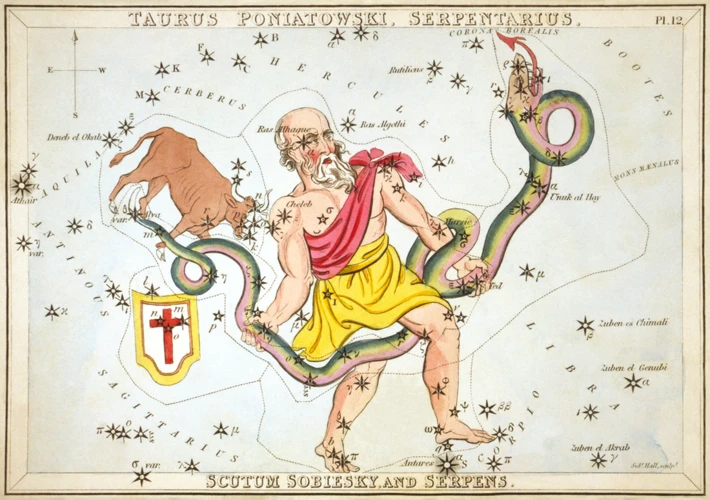
Indulge in the captivating realm of the serpent’s role in transformation, as we explore its symbolism in alchemy and spiritual awakening. Serpents have long been associated with the transformative processes in various cultural and esoteric traditions.
Alchemy, the ancient practice of transmutation, utilized serpent symbolism to represent the transformative journey from base matter to spiritual enlightenment. In alchemical texts and illustrations, serpents often intertwined around a staff called the Caduceus, symbolizing the integration and balance of opposing forces. The shedding of the serpent’s skin also became a powerful symbol for the alchemist’s quest for inner transformation.
Beyond alchemy, serpents hold a prominent place in spiritual transformation across different belief systems. In Kundalini yoga, the serpent energy, known as Kundalini, is said to reside dormant at the base of the spine. Through specific practices and spiritual awakening, the serpent energy rises, guiding the seeker towards higher consciousness and transformation.
The serpent’s transformative symbolism extends beyond the physical realm, representing the shedding of limiting beliefs and embracing personal growth. In various spiritual traditions, serpents often appear in the context of initiation rites, where the individual experiences symbolic death and rebirth, emerging with a heightened understanding of themselves and the world around them.
Through its association with alchemy and spiritual awakening, the serpent takes on a profound role in the realm of transformation. These ancient beliefs and practices provide insights into the deep significance of the serpent’s symbolism and its connection to the vast tapestry of human existence. Prepare to be immersed in a world where serpents slither through the depths of spiritual exploration, leaving a lasting impact on those who dare to traverse the path of transformation.
[Link: /ophiuchus-health-astrological-perspective/]
Serpent Symbolism in Alchemy
Alchemy, the ancient philosophical and proto-scientific tradition, also embraced the symbolic power of serpents. In alchemy, serpents were often depicted as intertwined or coiled around a central axis, forming the famous symbol of the Caduceus. This symbol, representing healing and transformation, prominently features two serpents entwined around a staff. The staff symbolizes the world axis or the union of opposites, and the serpents are seen as balancing and harmonizing forces. One serpent is associated with the masculine principle of sulfur, representing fiery energy, while the other serpent symbolizes the feminine principle of mercury, signifying fluidity and transformation. Their intertwining represents the union of these polarities, a vital aspect of the alchemical process. This serpent symbolism in alchemy signifies the integration and balance of opposing forces within the self, leading to personal and spiritual transformation. The serpents, with their shedding of skin and ability to navigate between the earthly and spiritual realms, serve as potent metaphors for the alchemist’s journey of transmutation and transcendence. [Link: /exploring-symbolism-ophiuchus-mythology/]
The Serpent’s Role in Spiritual Transformation
The serpent’s role in spiritual transformation is deeply rooted in various belief systems and mythologies. Across different cultures, the serpent is seen as a powerful symbol representing the journey of self-discovery, enlightenment, and spiritual awakening.
In alchemy, the serpent is often depicted as a catalyst for transformation, symbolizing the process of transmutation and the purification of the soul. It represents the shedding of old patterns, beliefs, and limitations in order to embrace personal growth and spiritual evolution. The serpent’s ability to shed its skin becomes a metaphor for individuals shedding their old selves to reveal their true essence.
In Hindu mythology, the Kundalini serpent represents dormant spiritual energy coiled at the base of the spine. Through various practices such as meditation, pranayama, and yogic techniques, individuals can awaken this serpent energy and guide it up through the chakras, leading to profound spiritual experiences and union with the divine.
In the biblical narrative of Adam and Eve, the serpent is often associated with temptation and the fall from grace. However, some interpretations view the serpent as a symbol of knowledge and enlightenment. In this context, the serpent becomes a catalyst for spiritual growth, urging individuals to question and seek deeper understanding of themselves and the world around them.
The serpent’s role in spiritual transformation is an intricate and complex concept that transcends cultural boundaries. It serves as a reminder of the inherent transformative power within each individual, encouraging them to embrace their true nature, overcome obstacles, and embark on a journey towards spiritual awakening and self-realization.
As we explore further into the symbolism of the serpent in relation to Ophiuchus and its significance in astrology, we’ll uncover more layers of meaning behind this enigmatic creature.
[Link: /beyond-horoscope-ophiuchus-zodiac/]
Conclusion
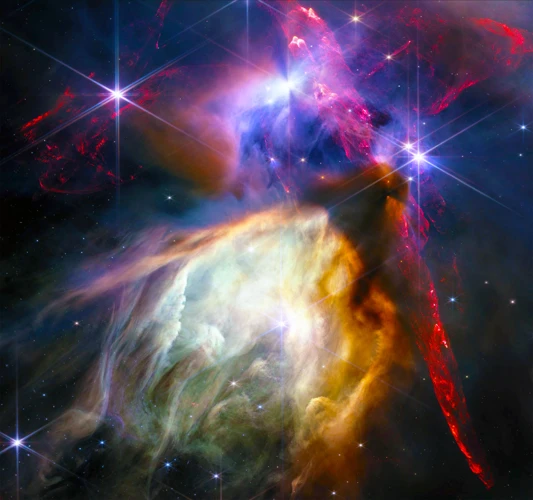
In conclusion, the significance of serpents in mythology is undeniable. From ancient creation myths to tales of rebirth and renewal, serpents have captivated the human imagination for centuries. Their symbolism is deeply rooted in various cultures, representing both positive and negative aspects of life and the natural world. The connection between serpents and the constellation of Ophiuchus further adds to their mystique. Ophiuchus, the Serpent Bearer, holds a unique place in astrology, challenging traditional notions of the zodiac. The traits associated with Ophiuchus individuals, such as wisdom, healing, and transformation, align with the symbolic power of serpents. In astrology and alchemy, serpents represent powerful archetypes and spiritual transformation, guiding individuals through profound inner changes. The serpent’s ability to shed its skin and emerge renewed has inspired countless individuals on their personal journeys of growth and awakening. As we unravel the mysteries of serpents in mythology, we gain a deeper understanding of ourselves and the world around us, transcending boundaries and embracing the transformative power of these enigmatic creatures.
[Link: /beyond-horoscope-ophiuchus-zodiac/]
Frequently Asked Questions
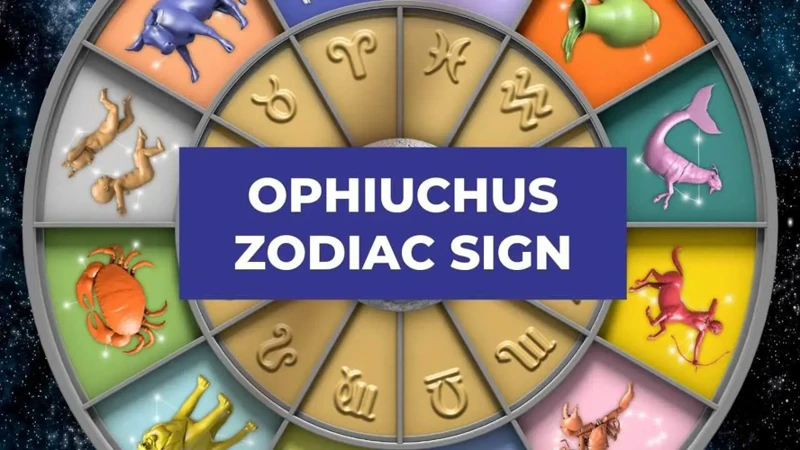
FAQs about Serpents in Mythology and Ophiuchus
1. What is the significance of serpents in ancient mythology?
Serpents held significant roles in ancient mythology, symbolizing creation, rebirth, and renewal. They represented the cyclical nature of the universe and were often associated with powerful deities.
2. Why are serpents considered symbols of rebirth and renewal?
Serpents can shed their skin, a process that symbolizes transformation and rebirth. This ability to undergo a physical metamorphosis made serpents powerful symbols of renewal and regeneration.
3. Which cultures had snake gods in their mythology?
Snake gods were prominent in various mythologies around the world. The Egyptians worshipped serpent gods like Apep and Wadjet. Hindu mythology features the Nāga, serpent deities. Aztec mythology revered Quetzalcoatl, a feathered serpent deity.
4. What is the connection between serpents and the constellation Ophiuchus?
Ophiuchus, known as the Serpent Bearer, is a constellation in the zodiac. It is often associated with healing and medicine, as well as the symbol of a serpent. This connection highlights the significance of serpents in the cosmos.
5. What are the traits associated with individuals born under the sign of Ophiuchus?
People born under the sign of Ophiuchus are believed to possess traits like wisdom, intuition, healing abilities, and a deep connection to spirituality. They are often seen as mysterious and driven by a desire to bring positive change to the world.
6. How is serpent symbolism interpreted in astrology?
In astrology, serpents are seen as a powerful archetype representing transformation and spiritual growth. They are associated with the Kundalini energy, representing the potential for enlightenment and higher consciousness.
7. What does Ophiuchus represent in the zodiac?
Ophiuchus is considered the 13th zodiac sign, representing the Serpent Bearer. It is associated with healing, wisdom, and the search for truth. Ophiuchus individuals are believed to possess unique qualities beyond the traditional zodiac signs.
8. How does serpent symbolism relate to alchemy?
In alchemy, the serpent symbolizes the transformative process of transmuting base metals into gold, representing the purification and elevation of the soul. This serpent imagery is often used to depict the stages of spiritual transformation.
9. What role does the serpent play in spiritual transformation?
The serpent serves as a symbol of spiritual awakening and the journey towards self-realization. It represents shedding old patterns, embracing change, and embarking on a path of personal growth and enlightenment.
10. How do serpents continue to influence our beliefs and understanding of the universe today?
The enigmatic nature of serpents in mythology continues to captivate us, serving as a reminder of the ancient wisdom and mysteries embedded within our collective consciousness. Exploration of serpent symbolism allows us to delve deeper into our own spiritual journeys and expand our understanding of the interconnectedness of all things.
References
Frequently Asked Questions

FAQ 1: Why are serpents significant in mythology?
Serpents are significant in mythology because they symbolize a range of concepts including creation, knowledge, wisdom, rebirth, and transformation. They often represent the dualistic nature of life, and are featured in various mythological stories from different cultures around the world.
FAQ 2: What does the serpent represent in creation myths?
In creation myths, serpents are often associated with the beginning of life and the creation of the world. They symbolize the primordial chaos and the potential for transformation and renewal. Serpents are sometimes depicted as the creative force that brings order out of chaos.
FAQ 3: Why are serpents considered symbols of rebirth and renewal?
Serpents shed their skin, symbolizing the process of rejuvenation and rebirth. This ability to renew themselves has led to the association of serpents with themes of regeneration and the cyclical nature of life. In many cultures, serpents are seen as symbols of renewal and transformation.
FAQ 4: What role do snake gods play in Egyptian mythology?
In Egyptian mythology, snake gods such as Wadjet and Apep represent both the protective and destructive aspects of serpents. They are associated with the pharaoh’s power and protection, and are also seen as enemies of the sun god Ra, representing chaos and disorder.
FAQ 5: Who are the Nāga in Hindu mythology?
The Nāga are serpent deities in Hindu mythology. They are often depicted as both semi-divine and semi-human, and are associated with water bodies and fertility. The Nāga are known for their wisdom and are often worshipped as guardian spirits.
FAQ 6: What is the significance of Aztec serpent deities and Quetzalcoatl?
Aztec serpent deities, such as Quetzalcoatl, hold great importance in Aztec mythology. Quetzalcoatl, known as the Feathered Serpent, is the creator god and a symbol of wisdom and knowledge. He is also associated with fertility and arts and crafts.
FAQ 7: Who is Ophiuchus, the serpent bearer?
Ophiuchus is a constellation in the zodiac system. In ancient Greek mythology, it represents a healer named Asclepius, who was known for his ability to revive the dead. Ophiuchus is often depicted holding a serpent, symbolizing the healing power and wisdom associated with serpents.
FAQ 8: What are the traits of Ophiuchus individuals?
Ophiuchus individuals are believed to possess qualities such as power intuition, healing abilities, and a deep connection with spirituality. They are often described as being insightful, creative, and having a strong sense of justice. Ophiuchus individuals are thought to be natural healers and seekers of truth.
FAQ 9: Why is the serpent a powerful archetype in astrology?
The serpent archetype in astrology represents transformation, healing, and wisdom. It symbolizes the journey of personal growth and spiritual evolution. The serpent’s association with shedding old layers and embracing change makes it a powerful symbol in understanding and interpreting astrological charts.
FAQ 10: How is Ophiuchus interpreted in the zodiac?
Ophiuchus is not traditionally included in the zodiac system followed by most Western astrologers. However, some believe that Ophiuchus represents a hidden 13th zodiac sign and attribute characteristics such as determination, strength, and intuition to those born under it. Interpretations may vary, as astrology is a complex and diverse field.






